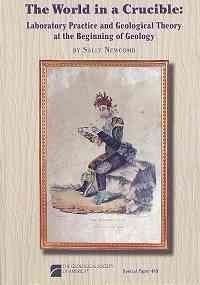
The World in a Crucible Laboratory Practice and Geological Theory at the Beginning of Geology
Geology coalesced as a discipline in the early part of the nineteenth century, with the coming together of many strands of investigation and thought. The theme of experimentation and/or instrument-aided observation is absent from most recent accounts of that time, which rely on an admixture of theory and field observations, informed by close examination of minerals. James Hutton emerged as the person who had it right with suggestion of a central heat source for Earth, while Abraham Gottlob Werner and his Neptunist supporters were derided as being blinded by overarching belief, as opposed to sober application of observed facts. However, despite several claims that Hutton had won the day, primary literature from both England and the Continent reveals that the question was by no means settled for decades after Hutton derided information derived from "looking into a little crucible." This Special Paper makes the case that it was just those parameters of heat, pressure, solution, and composition discovered in the laboratory that prevented resolution of the overriding questions about rock origin.